Is Streetwear At Its Breaking Point?
An investigative look into an ever-growing juggernaut. By Michelle Varinata
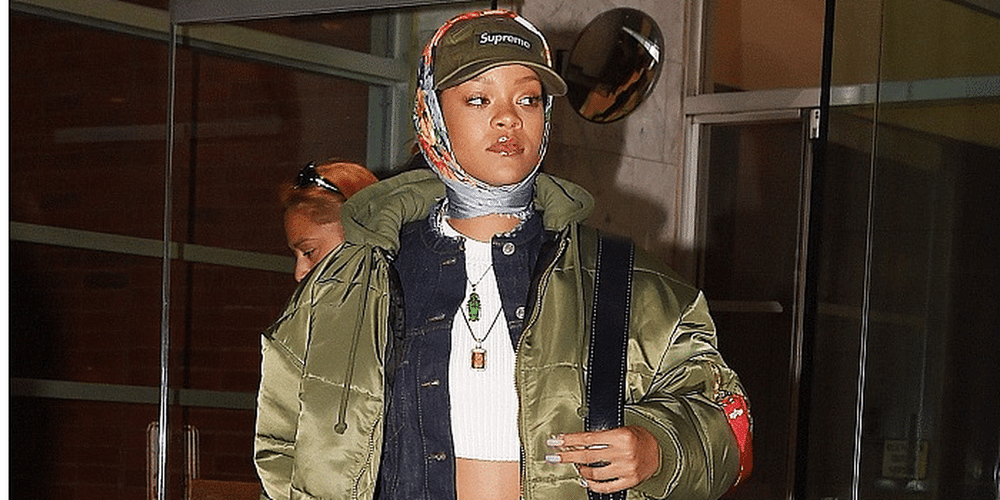
If there was one trend that defined this decade, it's streetwear. The standard blueprint consisted of hoodies, track suits, sweatpants, oversized tees, socks, slides and sneakers. Inspired by an eclectic mix from skate, surf and urban cultures, streetwear has been taking off since its dormant origins in Southern California in the early 1980s.
A far cry from its humble beginnings, the trend has fully permeated the mainstream as a commercial juggernaut thanks to celebrity endorsements, Instagram and collaborations with luxury brands. While the trend has been growing at an accelerating pace, has it reached to the highest peak of the trend cycle?
Here are the top 5 signs that the trend has reached the peak of the fashion cycle:
1. Copying and Pasting
Vetements and Balenciaga might seem like they're at odds with each other; however, Demna Gvasalia is the man single-handedly responsible for creating the twin-like parallels between both brands. While copying and pasting his own designs (with a bit of modification doesn't seem like a terrible sin, there are other designers who committed more heinous crimes of design plagiarism.
While Balenciaga is one of the most highly-touted designers, Instagram's favourite fashion watchdog Diet Prada called out streetwear mecca Kith for copying the Parisian brand's presidential candidate-style graphic.
If plagiarising Balenciaga a milder form of capital punishment, perhaps copying and pasting a design from Raf Simons is the bigger offense as seen on Los Angeles-based streetwear label RtA, whose palm tree graphic looks eerily similar to the Belgian designer's graphic from 1998.
Equally criminal to knocking off a design is the consumption of bootleg goods. Recently, Supreme is reported to be the most-searched brand for counterfeit goods, beating luxury god Christian Louboutin.
Like Diet Prada, Fake Finds captures screenshots of counterfeit streetwear goods on Instagram.
Related article: Editor-In-Chief Kenneth Goh On Why Diet Prada Is Crucial To The Fashion Industry
Despite streetwear's symbiotic relationship with being inspired by knockoffs, Virgil Abloh of Off-White filed a $2 million lawsuit asking 160 online retailers to stop selling copies of his goods.
Ironically, Abloh caught himself in hot water with Phillip Lim as the latter accused him of copying 3.1 Phillip Lim's Alix bag.
2. Decline of Brands
In an exposé by High Snobiety, slumping sales hit Vetements. Once the arbiter of introducing luxury streetwear to the masses via the support of celebrities, the French brand suffered blows by slashing its prices by 60 to 70 percent at outlets. Despite keeping the crowd's interest afloat, Business of Fashion reported that Vetements' popularity was usurped by Balenciaga, which currently sits on top of Lyst Index of Hot Brands in 2018.
Demna Gvasalia isn't the only one being affected by the slumping sales of Vetements. Russian streetwear designer Gosha Rubchinskiy, whose black and white graphic tee was worn by Kylie Jenner, put his namesake line on hiatus. Rather than shutting down his line for financial reasons, Rubchinskiy reasoned that he needed to focus his projects with Comme Des Garçons.
Prior to Hood by Air's comeback, founder and designer Shayne Oliver put his brand on hiatus to focus on designing womenswear and menswear at Helmut Lang. If more streetwear designers are putting their own brands on hiatus to design for bigger (i.e. luxury) companies, will the rest follow the lead?
3. Celebrity Endorsements
As the middleman of fashion and music, Pharrell introduced Japanese streetwear brand BAPE to the masses since the 2000s alongside their joint venture, Billionaire Boys Club. From there, Kanye West and Rihanna tapped into the streetwear market with their commercially successful collabs with Adidas and Puma. Although bringing streetwear to the masses via collaborative clothing lines was a cool idea, introducing the concept of selling exclusive merchandise via a pop-up store took things to the next level.
In 2012, Tyler, the Creator started the trend to launch a pop-up store hawking his merchandise. Four years later, West, Drake and Justin Bieber released their own pop-up stores featuring Vetements-inspired designs. Not to mention, all of them sported their own wares whether it's on stage or in store.
Related article: Are Chanel And Pharrell Williams Collaborating On A New Adidas Sneaker?
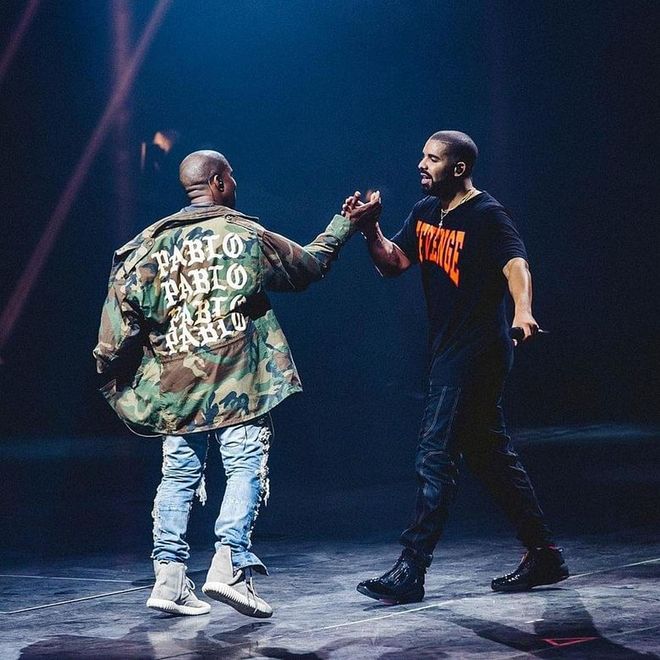
Photo: @champagnepapi/Instagram
drake kanye
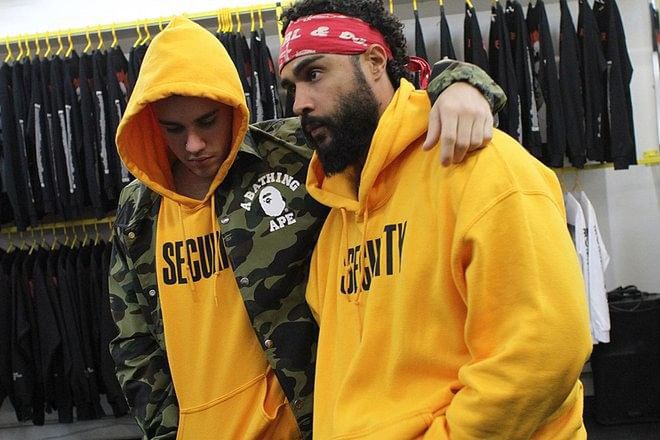
Photo: VFiles
justin bieber purpose merch v files
Although exclusive merch wasn't readily available to a city near us, Bieber rebooted his Purpose Tour merch with H&M a month after he abruptly cancelled the tour in July 2017.
While the merch hype reached a saturating point with Bieber's H&M launch, Justin Timberlake recently entered into the game with his collaboration with emerging streetwear designer Heron Preston for the singer's Man of the Woods tour pop-up store.
As the Man of the Woods Tour is raking in $37 million, SPIN opines that Timberlake's merch is a "death knell" to the celebrity pop-up store given that the former boybander is better known for his affinity for suits and ties than sweatshirts and hoodies.
4. More Hype than Supply
The bread and butter of streetwear is hype. To build hype, drops are issued to drive up the sales of products with limited quantity. Whether it's a novelty product (e.g. a Supreme Metrocard) or a collaboration (e.g. Pharrell x Adidas NMD sneakers), the ability to own an item is a priority. But if a product is sold out, BBC reports that resale websites such as StockX mark up the products up to 1000 percent.
Related article: Streetwear Beast, Supreme Collaborates With Iconic Photographer Nan Goldin
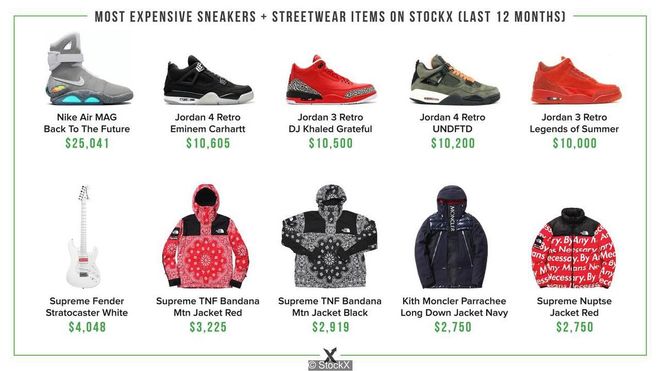
Photo: StockX
stockx
Joining in on the resale craze is Abell, a Los Angeles-based auction house. In September 2017, it added 211 listings for sneakers as part of its Jewellery & Luxury auction. Normally reserved for jewellery, artwork and antique curios, luxury goods now include sneakers.
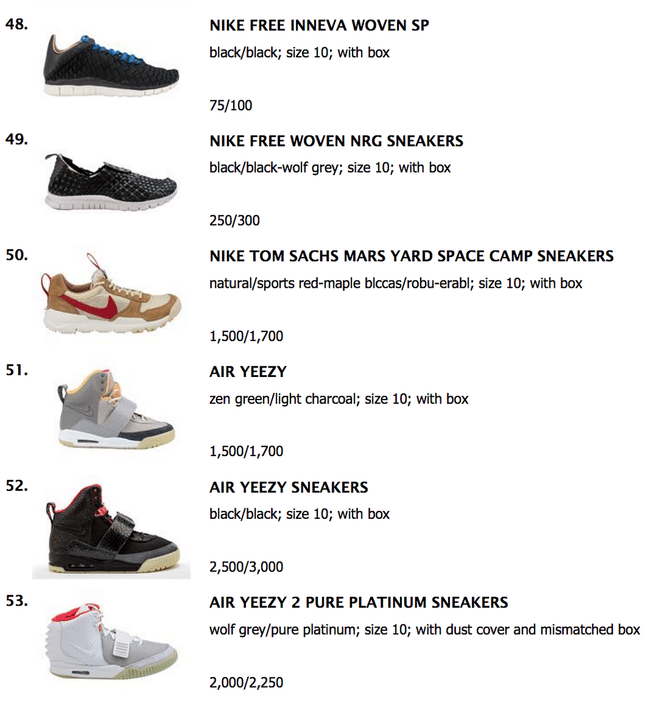
Photo: Abell
abell listing
While auction houses rely on collectors to sell their stash, some sneaker resalers use bots to purchase massive quantities from the company's website.
If having a rare design of Nike sneakers or Yeezys are something to invest in, the desire to own coveted "It" items often cause more harm at the expense of other consumers. In February 2018, a fight occurred at the Adidas store in Pacific Plaza.
After all, is it worth it to get into a tussle with someone over a new pair of Pharrell x Adidas sneakers?
5. The Luxury Fashion Hijack
Streetwear finally broke the walls of high fashion thanks to Supreme's collaboration with Louis Vuitton. In a similar vein to Supreme x Louis Vuitton, Longchamp tapped Hood by Air's Shayne Oliver to design a collection of handbags and clothes.
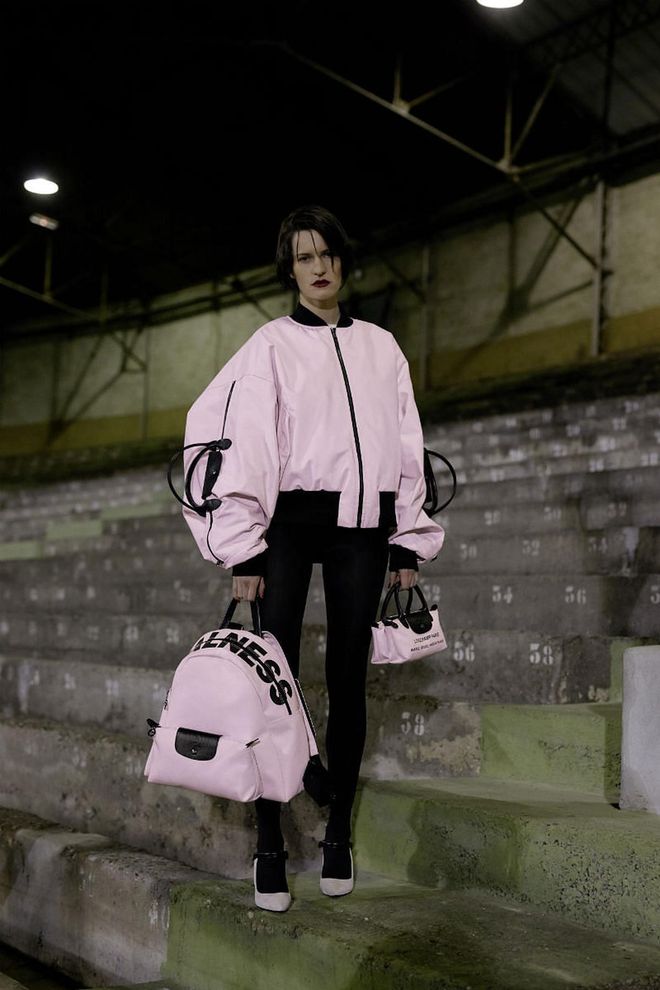
Photo: Longchamp
longchamp hood by air
Despite his own self-imposed hiatus on his namesake line, Rubchinskiy collaborated with Burberry.

Photo: Burberry
gosha burberry
Contrary to the its dressed down counterparts, New York-based designer Dapper Dan unveiled an atelier with Gucci in Harlem, which is close to the location of his original store.
As streetwear has been flourishing from all aspects of the market from mass to luxury, there is a high risk that the phenomenon will crash once high fashion has found a new fad to obsess over.